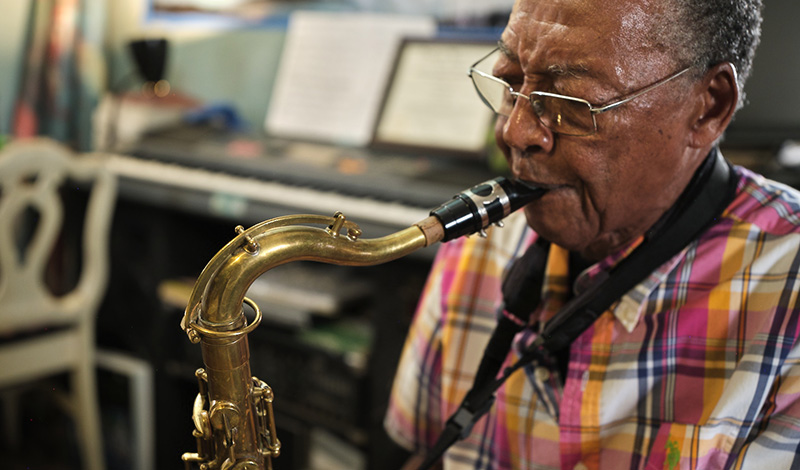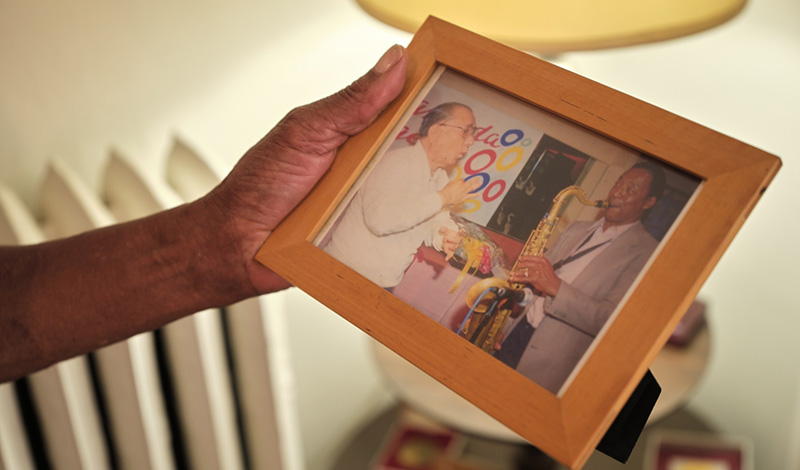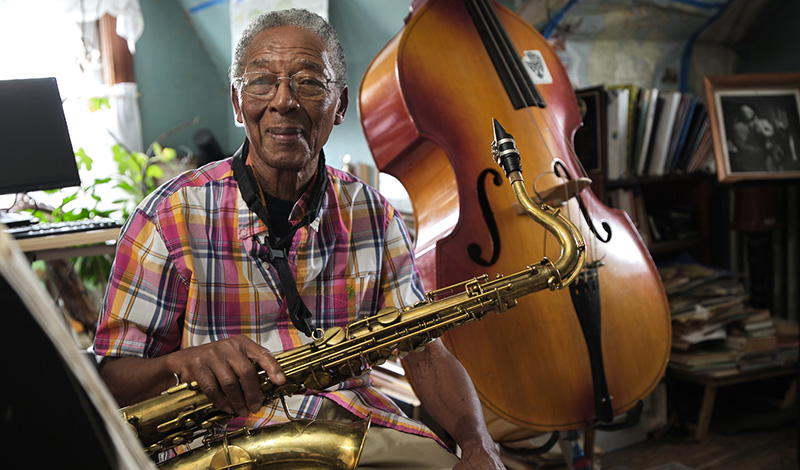by Willie Mack
Coaldale, Penn.
I first began playing with Harlem’s New Amsterdam Music Association (NAMA) at the gibe of one of its instructors. Memorably, she asked if I wanted to learn to play “that thing,” by which she meant the saxophone I wore around my neck—the one I’d worn about as long as I’d been walking.
Attitude, was what she saw I lacked, not technique. Born and raised in Darlington, South Carolina, a hotbed of jazz talent, a town in which everyone, it seemed, played something, the first thing I bought for myself was a horn.
“Gonna play that horn, boy?” my uncle called when he saw it. I nodded. “Then how’re you gonna earn a living?” We laughed.
No one I knew played music for the money, but I’d be lying if I said I didn’t have a dream. Big name talents lived in Darlington, and when they came home from tour, you heard about it. There was something rapturous about this—I dreamed of trotting the globe with my own quartet, causing a fuss when I got back into town.
I wouldn’t perform until college, and then without much success. On good nights, the band would make merry. On bad nights, we’d fight. We were wrapped up in our egos, trying to outdo the others onstage. This, of course, is no recipe for great jazz.

I was in my late 30s when I caught the pride-wounding gibe from the NAMA instructor. What did she mean learn to play?
A couple years later, in 1973, I was introduced to Nichiren Buddhism by a fellow musician. Chanting at his place, I felt… good. I kept at it. Friends and fellow musicians saw the difference. At the NAMA studio, my instructor noted the changed sound of my sax. “It’s good,” she said. I didn’t know how to explain it, really—it was life force I was tapping. The following year, I received the Gohonzon.
In June 1981, nearly a decade after I’d been introduced to Buddhism, I was given the opportunity to perform for Ikeda Sensei in Glen Cove, New York. We played as an orchestra, and he played for us a piece on the piano.
Afterward, I wandered aimlessly, admiring the huge swans roaming the massive estate. Alone with my thoughts, they turned to matters at home. My wife and I had been married for 8 years by then and were raising our two children in a small, rented apartment on an unsteady income. My feet grew heavy as I walked.
From the corner of my eye, I saw someone walking at a vigorous pace: Sensei with his interpreter. There was no one else in sight. He came close, clasped my hand and said: “Let’s fight together for kosen-rufu. Fight with me for world peace.”
“Yes!” I said. Down the slope, a bus of members arrived, and as swiftly as he’d come, he was off, rushing down to welcome them.
I was crying, I realized. Crying? Why? But something deep had happened in me. It was like, on contact with my mentor, my life resonated with his, pitching mine to a new key, one I’d never heard before.
I stood there, alone again with the swans, my whole body vibrating. My personal worries seemed suddenly small. A new question hummed in the depths of my life: How can I make good on this promise?
The following day, Sensei unveiled the poem he dedicated to the members of the youth division: “To My Beloved Young American Friends: Youthful Bodhisattvas of the Earth.” Sensei was telling us to never forget our vow.
I returned from Glen Cove with an expanded heart. I felt I’d seen the world through Sensei’s eyes. I saw that my dreams of a world-touring quartet and my personal worries were small potatoes. My mentor’s dream was the awakening of all humanity to its highest potential and the elimination of misery. Chanting abundant daimoku, I came to realize that I wanted to teach. This I began doing within the year.

From my first day of teaching, I chanted morning and evening for the happiness of my students. Teaching, like jazz, is a give and take. Engaging with my students with my entire being gave rise to new avenues of creativity.
Walking down the hall one day, through a class of painting children, a splash of color caught my eye and brought me up short. Most of the kids had finished up; their works were hung to dry on the walls. The one that had caught my attention was all color—all green, yellow, indigo splashes. I couldn’t take my eyes off it.
“You’ve been looking at that one for a while,” the class’s teacher said, approaching.
“Well, I can almost hear it,” I said. And it was true, the colors were forming in my mind as notes, as music. The experience would lead me to explore what is called color music—music exploring the relationship between color and sound. It would become one of my life’s great interests, one I explored with my students as well as with many painters and artists.
Over the past two years, I became NAMA’s board chairman and received my city’s Public Advocate Award, leading to some invitations to speak. Recently, at a dinner, I was asked to give the invocation.
I shared about Buddhism and ended with a story I’d read from Sensei, about an emperor and a wise man, called “Three Questions.”
“When is the most important time to start a task?” the King queries. “What kind of person do I need most? What tasks are most important?” To which the wise man answers, “The most important time is now; the most important person is the one in front of you; and the most important task is doing good to others” (see The Wisdom for Creating Happiness and Peace, part 1, revised edition, pp. 234–35).
Striving to share in my mentor’s dream and spirit, I’ve engaged with the person right in front of me, one after another, to impart my hopes for them, my belief in them; to awaken them to a dream that is bigger than they have yet to dream of.
Q: What advice would you give the youth?
Willie Mack: Dare to dream. With the Gohonzon, there’s nothing you can’t do.
You are reading {{ meterCount }} of {{ meterMax }} free premium articles

